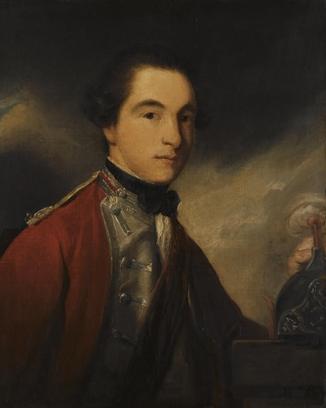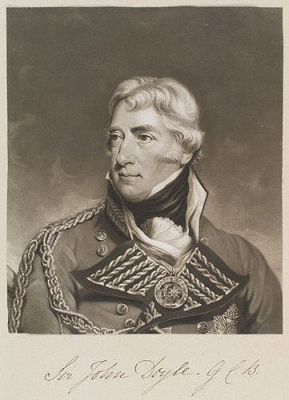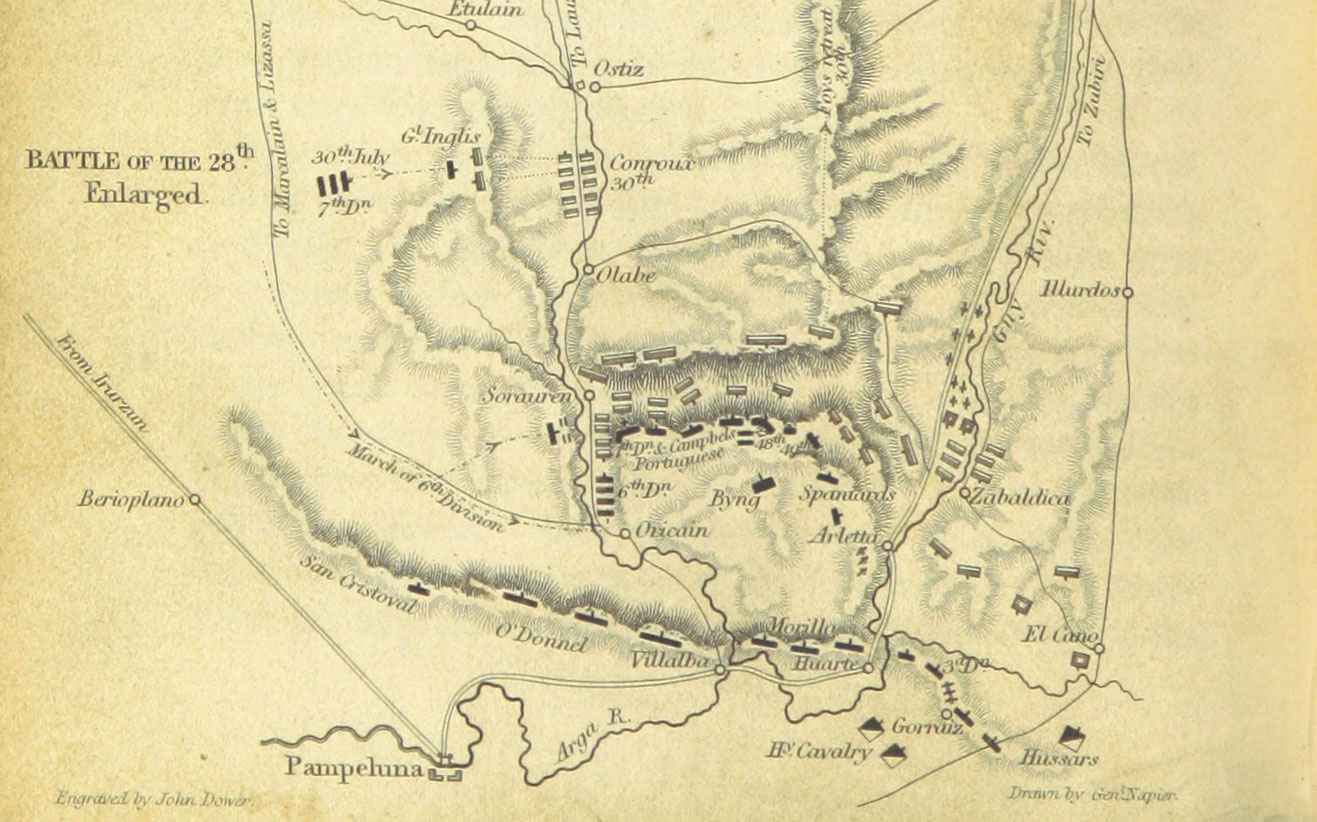|
18th Royal Hussars
The 18th Royal Hussars (Queen Mary's Own) was a cavalry regiment of the British Army, first formed in 1759. It saw service for two centuries, including the First World War before being amalgamated with the 13th Hussars to form the 13th/18th Royal Hussars in 1922. History Early history The regiment was first raised by Charles, Marquess of Drogheda as the 19th Regiment of (Light) Dragoons in 1759; it was also known as Drogheda's Light Horse. It was renumbered the 18th Regiment of (Light) Dragoons in 1763, and briefly the 4th Regiment of Light Dragoons in 1766 before reverting to the 18th in 1769. Arthur Wellesley was briefly a junior officer in the regiment between October 1792 and April 1793. The regiment undertook a one-year tour in Saint-Domingue between February 1796 and February 1797. It was in action at the Battle of Bergen in September 1799 during the Anglo-Russian invasion of Holland.Malet, p. 16 In 1805 it took the title of the 18th (King's Irish) Regiment of (Light) Dra ... [...More Info...] [...Related Items...] OR: [Wikipedia] [Google] [Baidu] |
Field Marshal
Field marshal (or field-marshal, abbreviated as FM) is the most senior military rank, ordinarily senior to the general officer ranks. Usually, it is the highest rank in an army and as such few persons are appointed to it. It is considered as a five-star rank (OF-10) in modern-day armed forces in many countries. Promotion to the rank of field marshal in many countries historically required extraordinary military achievement by a general (a wartime victory). However, the rank has also been used as a divisional command rank and also as a brigade command rank. Examples of the different uses of the rank include Austria-Hungary, Pakistan, Prussia/Germany, India and Sri Lanka for an extraordinary achievement; Spain and Mexico for a divisional command ( es, link=no, mariscal de campo); and France, Portugal and Brazil for a brigade command (french: link=no, maréchal de camp, pt, marechal de campo). Origins The origin of the term dates to the early Middle Ages, originally meanin ... [...More Info...] [...Related Items...] OR: [Wikipedia] [Google] [Baidu] |
Battle Of Benavente
The Battle of Benavente (29 December 1808) was a cavalry clash in which the British cavalry of Lord Paget defeated the elite ''Chasseurs à cheval'' of the French Imperial Guard during the Corunna Campaign of the Peninsular War. The French chasseurs were broken and forced into the River Esla; their commanding officer, General Lefebvre-Desnouettes, was captured. The action was the first major incident in the British army's harrowing retreat to the coast and ultimate evacuation by sea. Background The Corunna campaign started with the Battle of Cardedeu. Sir John Moore led a British army into the heart of northwestern Spain with the aim of aiding the Spanish in their struggle against the French occupation. However, Napoleon had entered Spain at the head of a large army in order to retrieve French fortunes. This, together with the fall of Madrid to the French, made the position of the British army untenable. The British army had begun their retreat and were being pursued by ... [...More Info...] [...Related Items...] OR: [Wikipedia] [Google] [Baidu] |
12th Royal Lancers
The 12th (Prince of Wales's) Royal Lancers was a cavalry regiment of the British Army first formed in 1715. It saw service for three centuries, including the First World War and the Second World War. The regiment survived the immediate post-war reduction in forces, but was slated for reduction in the 1957 Defence White Paper, and was amalgamated with the 9th Queen's Royal Lancers to form the 9th/12th Royal Lancers (Prince of Wales's) in 1960. History Early wars The regiment of dragoons was raised in Reading by Brigadier-General Phineas Bowles as the Phineas Bowles's Regiment of Dragoons in July 1715 as part of the response to the Jacobite rebellion. It was employed escorting prisoners to London later in the year. In 1718, the regiment was placed on the Irish establishment and posted to Ireland, where it remained for 75 years. In 1751, the regiment was officially styled the 12th Dragoons. In 1768, King George III bestowed the badge of the three ostrich feathers and the mot ... [...More Info...] [...Related Items...] OR: [Wikipedia] [Google] [Baidu] |
Battle Of Waterloo
The Battle of Waterloo was fought on Sunday 18 June 1815, near Waterloo (at that time in the United Kingdom of the Netherlands, now in Belgium). A French army under the command of Napoleon was defeated by two of the armies of the Seventh Coalition. One of these was a British-led coalition consisting of units from the United Kingdom, the Netherlands, Hanover, Brunswick, and Nassau, under the command of the Duke of Wellington (referred to by many authors as ''the Anglo-allied army'' or ''Wellington's army''). The other was composed of three corps of the Prussian army under the command of Field Marshal von Blücher (the fourth corps of this army fought at the Battle of Wavre on the same day). The battle marked the end of the Napoleonic Wars. The battle was contemporaneously known as the Battle of Mont Saint-Jean (France) or La Belle Alliance ("the Beautiful Alliance" – Prussia). Upon Napoleon's return to power in March 1815, many states that had previously opposed ... [...More Info...] [...Related Items...] OR: [Wikipedia] [Google] [Baidu] |
Ostend
Ostend ( nl, Oostende, ; french: link=no, Ostende ; german: link=no, Ostende ; vls, Ostende) is a coastal city and municipality, located in the province of West Flanders in the Flemish Region of Belgium. It comprises the boroughs of Mariakerke, Raversijde, Stene and Zandvoorde, and the city of Ostend proper – the largest on the Belgian coast. History Origin to Middle Ages In the Early Middle Ages, Ostend was a small village built on the east-end () of an island (originally called Testerep) between the North Sea and a beach lake. Although small, the village rose to the status of "town" around 1265, when the inhabitants were allowed to hold a market and to build a market hall. The major source of income for the inhabitants was fishing. The North Sea coastline has always been rather unstable due to the power of the water. In 1395 the inhabitants decided to build a new Ostend behind large dikes and further away from the always-threatening sea. 15th to 18th century T ... [...More Info...] [...Related Items...] OR: [Wikipedia] [Google] [Baidu] |
Hundred Days
The Hundred Days (french: les Cent-Jours ), also known as the War of the Seventh Coalition, marked the period between Napoleon's return from eleven months of exile on the island of Elba to Paris on20 March 1815 and the second restoration of King Louis XVIII on 8 July 1815 (a period of 110 days). This period saw the War of the Seventh Coalition, and includes the Waterloo Campaign, the Neapolitan War as well as several other minor campaigns. The phrase ''les Cent Jours'' (the hundred days) was first used by the prefect of Paris, Gaspard, comte de Chabrol, in his speech welcoming the king back to Paris on 8 July. Napoleon returned while the Congress of Vienna was sitting. On 13March, seven days before Napoleon reached Paris, the powers at the Congress of Vienna declared him an outlaw, and on 25March Austria, Prussia, Russia and the United Kingdom, the four Great Powers and key members of the Seventh Coalition, bound themselves to put 150,000 men each into the field to ... [...More Info...] [...Related Items...] OR: [Wikipedia] [Google] [Baidu] |
Battle Of Toulouse (1814)
The Battle of Toulouse (10 April 1814) was one of the final battles of the Napoleonic Wars, four days after Napoleon's surrender of the French Empire to the nations of the Sixth Coalition. Having pushed the demoralised and disintegrating French Imperial armies out of Spain in a difficult campaign the previous autumn, the Allied British-Portuguese and Spanish army under the Duke of Wellington pursued the war into southern France in the spring of 1814. Toulouse, the regional capital, proved stoutly defended by Marshal Soult. One British and two Spanish divisions were badly mauled in bloody fighting on 10 April, with Allied losses exceeding French casualties by 3,000. Soult held the city for an additional day before orchestrating an escape from the town with his army, leaving behind some 1,600 of his wounded, including three generals. Wellington's entry on the morning of 12 April was acclaimed by a great number of French Royalists, validating Soult's earlier fears of po ... [...More Info...] [...Related Items...] OR: [Wikipedia] [Google] [Baidu] |
Battle Of Orthez
The Battle of Orthez (27 February 1814) saw the Anglo-Spanish-Portuguese Army under Field Marshal Arthur Wellesley, Marquess of Wellington attack an Imperial French army led by Marshal Nicolas Soult in southern France. The outnumbered French repelled several Allied assaults on their right flank, but their center and left flank were overcome and Soult was compelled to retreat. At first the withdrawal was conducted in good order, but it eventually ended in a scramble for safety and many French soldiers became prisoners. The engagement occurred near the end of the Peninsular War. In mid-February, Wellington's army broke out of its small area of conquered territory near Bayonne. Moving east, the Allies drove the French back from several river lines. After a pause in the campaign, the westernmost Allied corps surrounded and isolated Bayonne. Resuming their eastward drive, the remaining two Allied corps pushed Soult's army back to Orthez where the French marshal offered battl ... [...More Info...] [...Related Items...] OR: [Wikipedia] [Google] [Baidu] |
Battle Of The Nive
The Battles of the Nive (9–13 December 1813) were fought towards the end of the Peninsular War. Arthur Wellesley, Marquess of Wellington's Anglo-Portuguese and Spanish army defeated Marshal Nicolas Soult's French army on French soil in a series of battles near the city of Bayonne. Unusually, for most of the battle, Wellington remained with the Reserve delegating command to his senior Lieutenant-Generals Rowland Hill and John Hope. Background Wellington's army had successfully pushed the French army out of Spain, over the Pyrenees, and into south-west France. After his defeat at Nivelle, Marshal Soult fell back to a defensive line south of the town of Bayonne along the Adour and Nive rivers. The rivers and the Bay of Biscay near Bayonne form a rough Greek letter Pi (π). The left vertical leg is the coast, the right vertical leg is the Nive and the crossbar is the Adour. Bayonne is located where the Nive joins the Adour. Initially, Wellington's army was confined ... [...More Info...] [...Related Items...] OR: [Wikipedia] [Google] [Baidu] |
Battle Of Sorauren
The Battle of Sorauren was part of a series of engagements in late July 1813 called the Battle of the Pyrenees in which a combined British and Portuguese force under Sir Arthur Wellesley held off Marshal Soult's French forces attempting to relieve Pamplona. Prelude With sizable Anglo-Portuguese forces tied up in assaulting San Sebastián and besieging Pamplona Pamplona (; eu, Iruña or ), historically also known as Pampeluna in English, is the capital city of the Chartered Community of Navarre, in Spain. It is also the third-largest city in the greater Basque cultural region. Lying at near above ..., the new French commander Marshal Soult launched a counterattack with the ''Armée d'Espagne'' through Maya and Roncesvalles. Although the French initially enjoyed local superiority, the tough terrain combined with stubborn British and Portuguese resistance slowed the French advance to a crawl. Battle The main French column of about 40,000 men under Clausel and ... [...More Info...] [...Related Items...] OR: [Wikipedia] [Google] [Baidu] |
Battle Of Vitoria
At the Battle of Vitoria (21 June 1813) a British, Portuguese and Spanish army under the Marquess of Wellington broke the French army under King Joseph Bonaparte and Marshal Jean-Baptiste Jourdan near Vitoria in Spain, eventually leading to victory in the Peninsular War. Background In July 1812, after the Battle of Salamanca, the French had evacuated Madrid, which Wellington's army entered on 12 August 1812. Deploying three divisions to guard its southern approaches, Wellington marched north with the rest of his army to lay siege to the fortress of Burgos, away, but he had miscalculated the enemy's strength, and on 21 October he had to abandon the Siege of Burgos and retreat. By 31 October he had abandoned Madrid too and retreated first to Salamanca then to Ciudad Rodrigo, near the Portuguese frontier, to avoid encirclement by French armies from the north-east and south-east. Wellington spent the winter reorganizing and reinforcing his forces to attack King Joseph i ... [...More Info...] [...Related Items...] OR: [Wikipedia] [Google] [Baidu] |
Battle Of Morales
The Battle of Morales was fought on 2 June 1813. It was a cavalry skirmish between the Duke of Wellington's vanguard and the rear guard of the French army. It occurred near the village of Morales which is in the vicinity of Toro, Zamora in Spain. General Digeon commanded the French cavalry and Colonel Grant the British hussars, although Major George Robarts was the one who gave the order to charge. Considered a victory for the British, the French cavalry then retreated upon their own retreating infantry and the British cavalry without infantry support were unable to continue the attack. Notes References * * 1813 in Spain Morales Morales Morales Morales is a Spanish surname. Notable people with the surname include: * Alfredo Morales (born 1990), American footballer * Alvaro Morales (other), several people * Amado Morales (born 1947), Puerto Rican javelin thrower * Bartolomé Mo ... June 1813 events History of the province of Zamora {{battle-stub ... [...More Info...] [...Related Items...] OR: [Wikipedia] [Google] [Baidu] |











